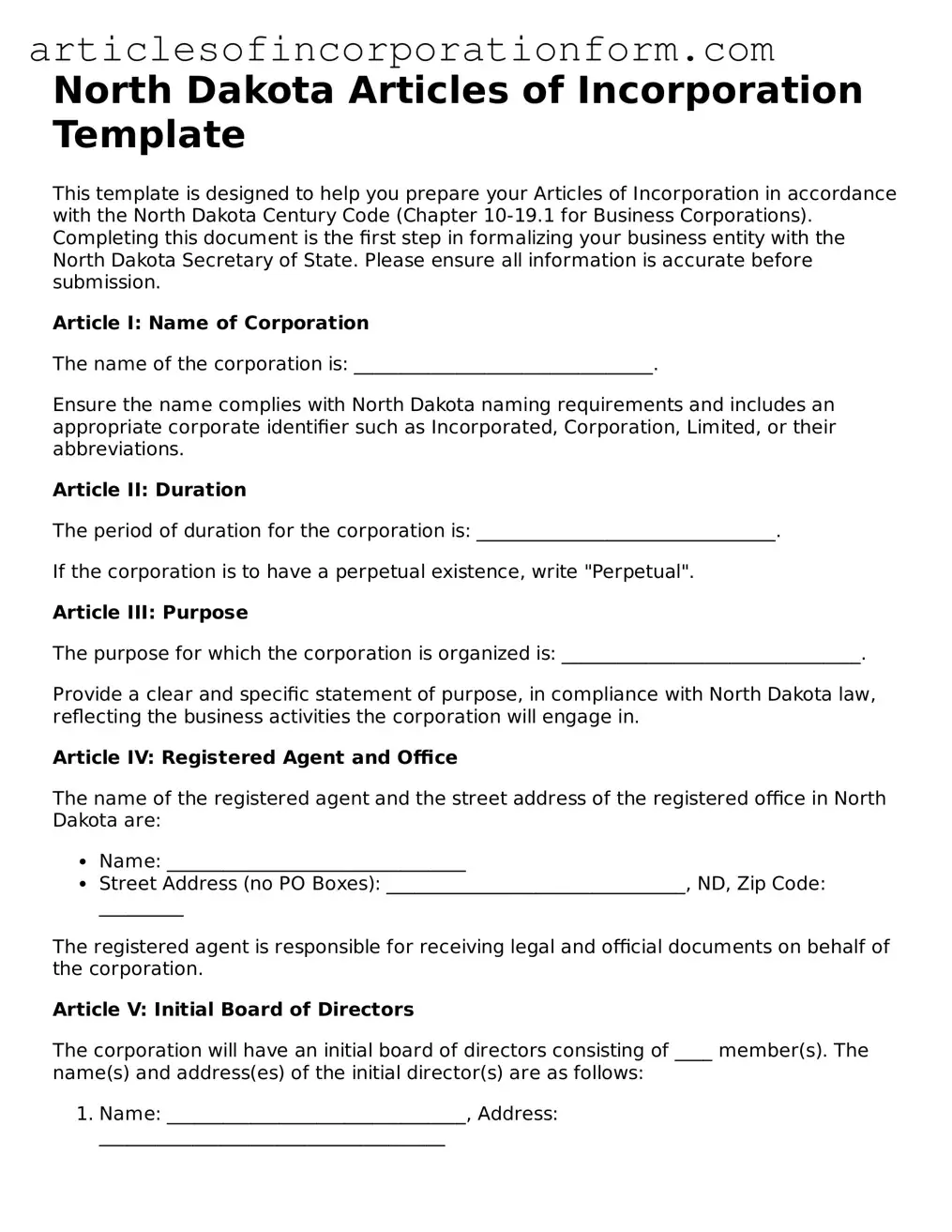North Dakota Articles of Incorporation Template
This template is designed to help you prepare your Articles of Incorporation in accordance with the North Dakota Century Code (Chapter 10-19.1 for Business Corporations). Completing this document is the first step in formalizing your business entity with the North Dakota Secretary of State. Please ensure all information is accurate before submission.
Article I: Name of Corporation
The name of the corporation is: ________________________________.
Ensure the name complies with North Dakota naming requirements and includes an appropriate corporate identifier such as Incorporated, Corporation, Limited, or their abbreviations.
Article II: Duration
The period of duration for the corporation is: ________________________________.
If the corporation is to have a perpetual existence, write "Perpetual".
Article III: Purpose
The purpose for which the corporation is organized is: ________________________________.
Provide a clear and specific statement of purpose, in compliance with North Dakota law, reflecting the business activities the corporation will engage in.
Article IV: Registered Agent and Office
The name of the registered agent and the street address of the registered office in North Dakota are:
- Name: ________________________________
- Street Address (no PO Boxes): ________________________________, ND, Zip Code: _________
The registered agent is responsible for receiving legal and official documents on behalf of the corporation.
Article V: Initial Board of Directors
The corporation will have an initial board of directors consisting of ____ member(s). The name(s) and address(es) of the initial director(s) are as follows:
- Name: ________________________________, Address: _____________________________________
- Name: ________________________________, Address: _____________________________________
- Name: ________________________________, Address: _____________________________________
Adjust the number of lines according to the actual number of initial directors. At least one director is required.
Article VI: Incorporator(s)
The name(s) and address(es) of the incorporator(s) are:
- Name: ________________________________, Address: _____________________________________
Incorporator(s) are individual(s) involved in the formation of the corporation.
Article VII: Stock
Authorized Shares: The corporation is authorized to issue ___ shares of common stock, at a par value of $____ per share.
State the total number of shares the corporation is authorized to issue and the par value, if any, of each share. The structure of stock can significantly impact your corporation, including voting rights and dividend distributions.
Article VIII: Indemnification of Directors and Officers
The corporation shall indemnify its directors and officers to the fullest extent permitted by the North Dakota Century Code.
This provision provides for the protection of personal assets of directors and officers against certain claims as they perform their duties.
Article IX: Incorporator's Statement
I, ________________________________, being the incorporator, hereby affirm that the information provided here is accurate to the best of my knowledge and belief, and in compliance with the North Dakota Century Code.
Date: ________________________________
If applicable, attach additional documents or schedules as required by the North Dakota Secretary of State.
After completing this template, review it thoroughly to ensure accuracy. Next, proceed with filing it with the North Dakota Secretary of State along with the appropriate filing fee.
